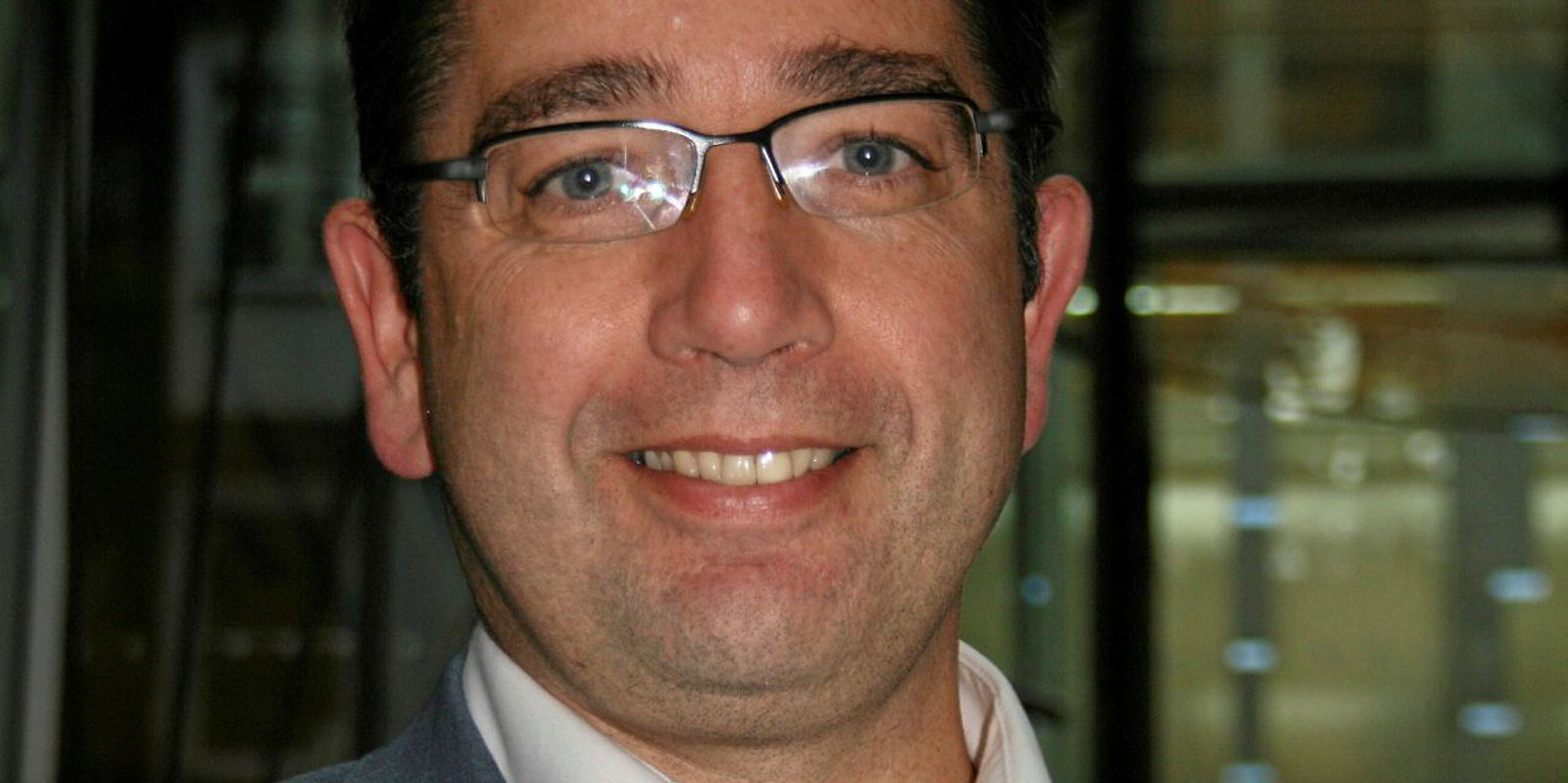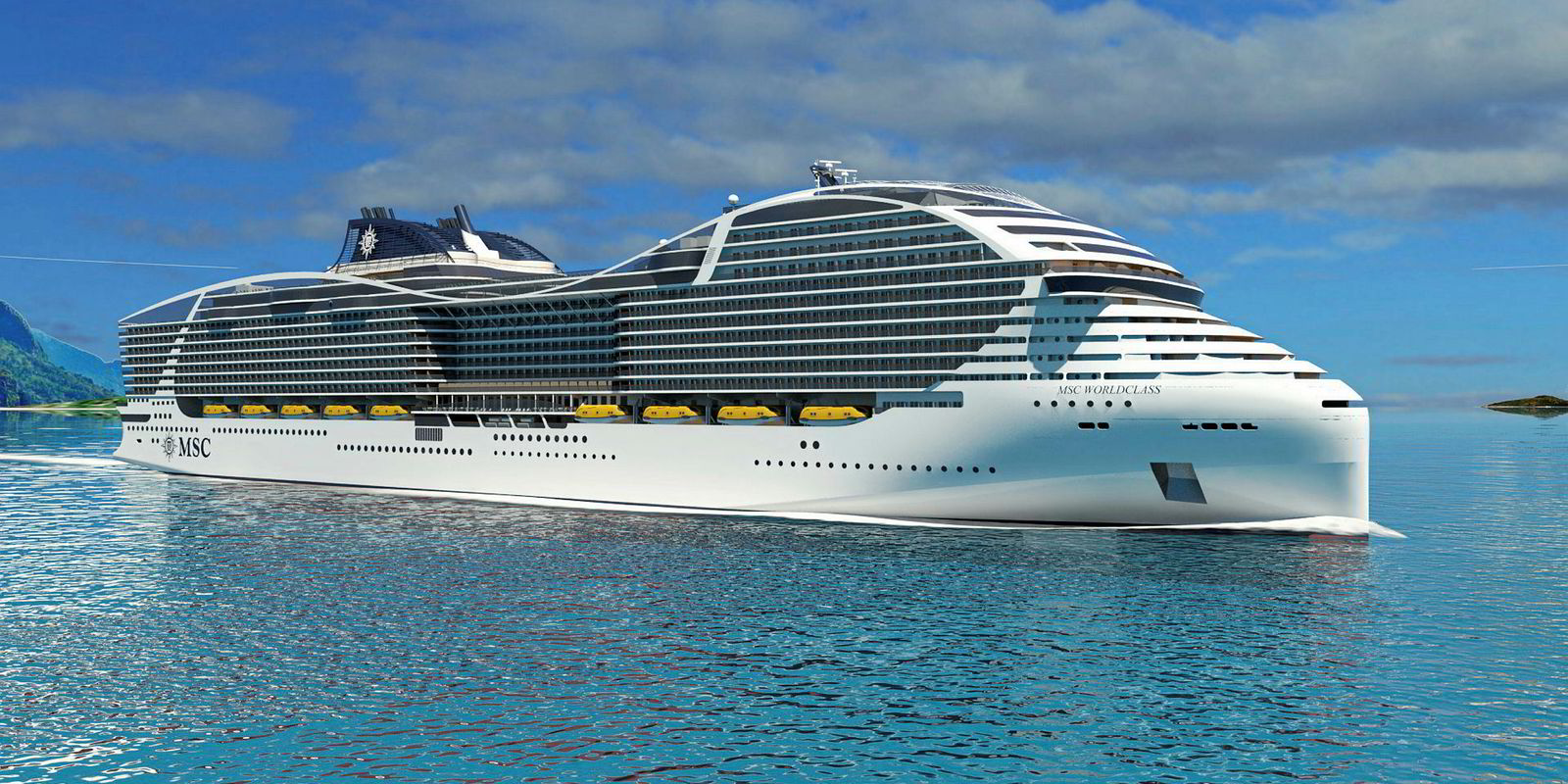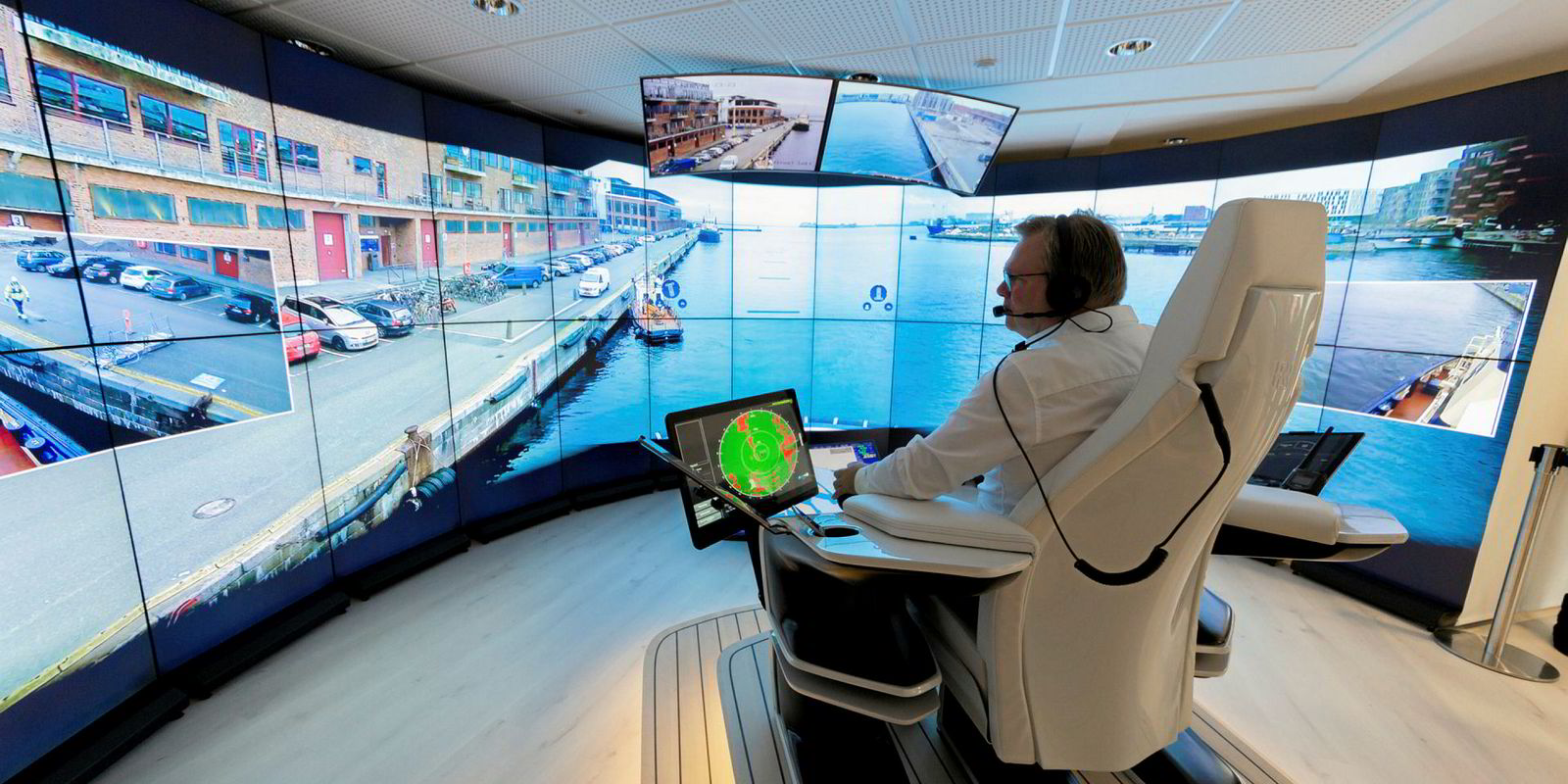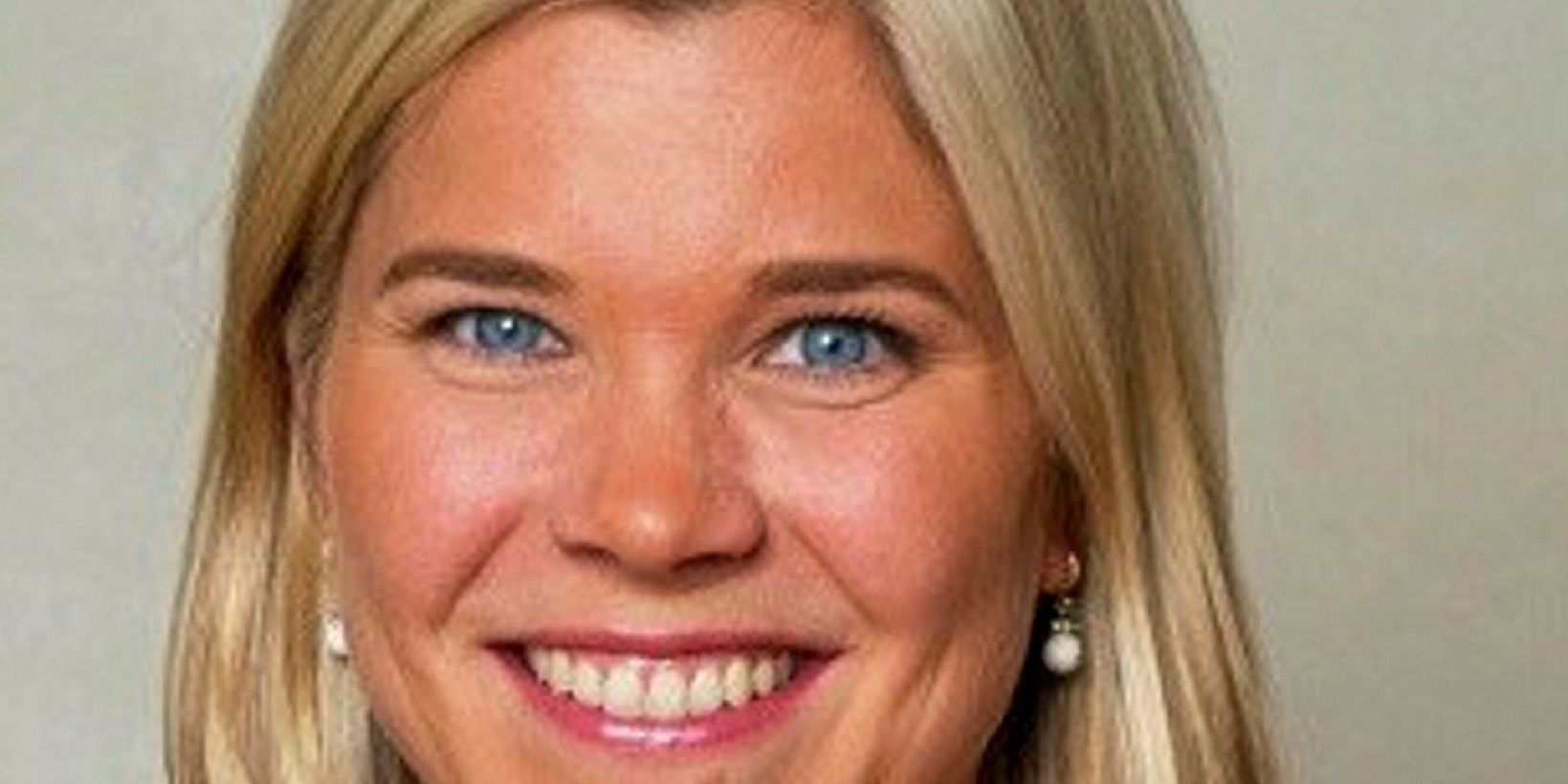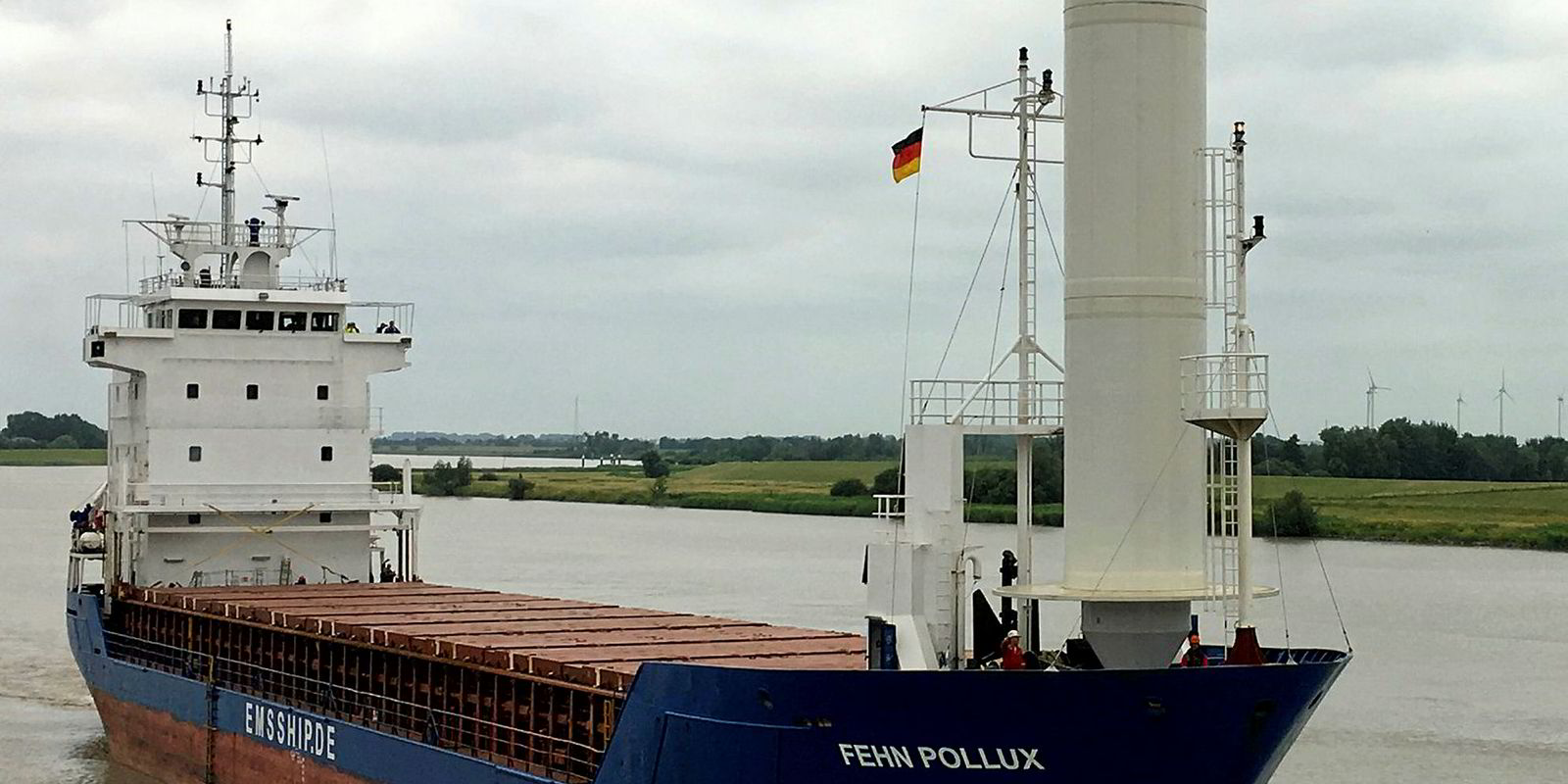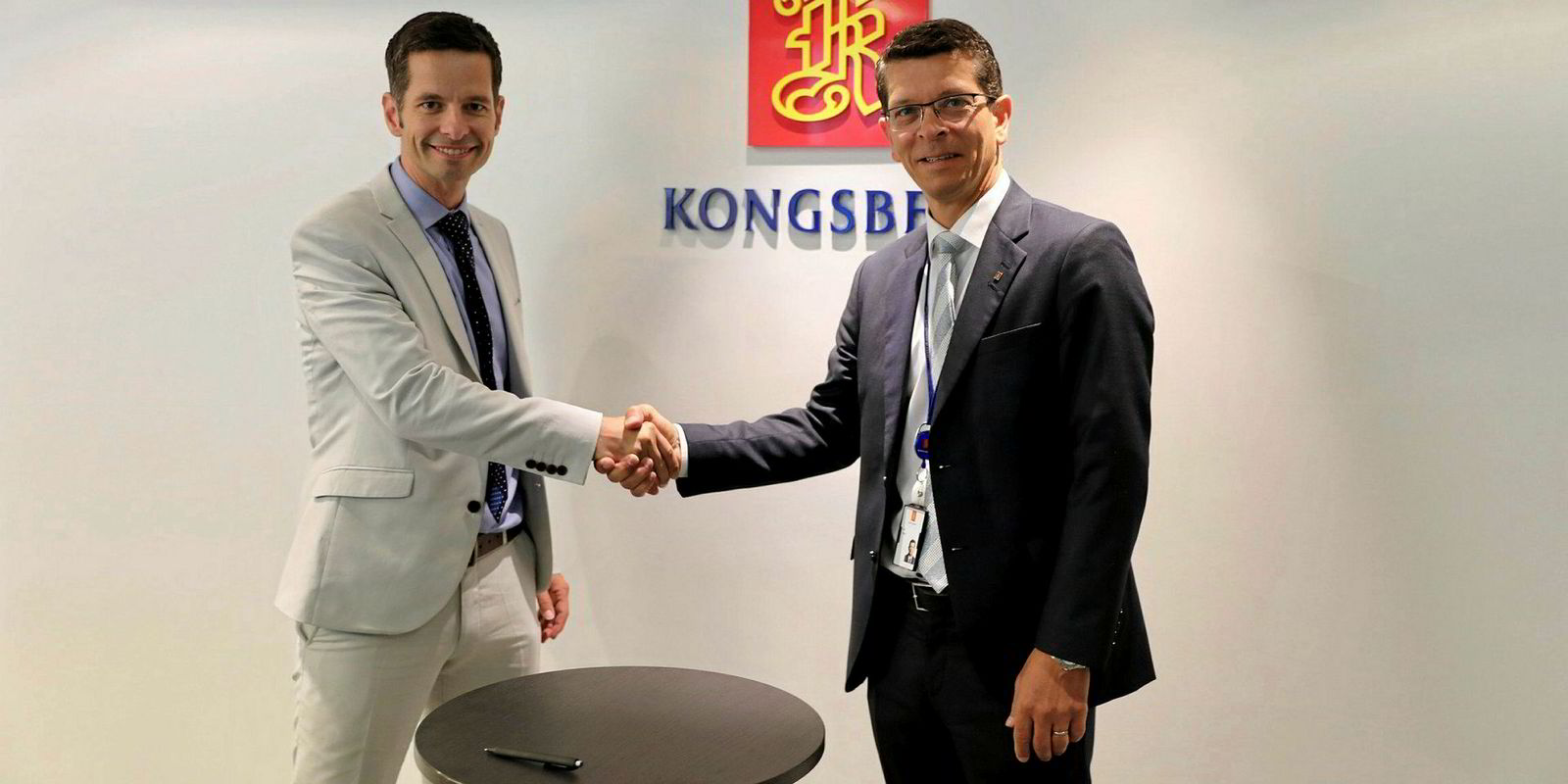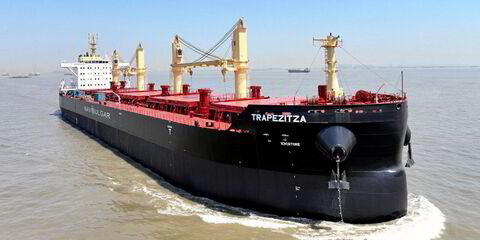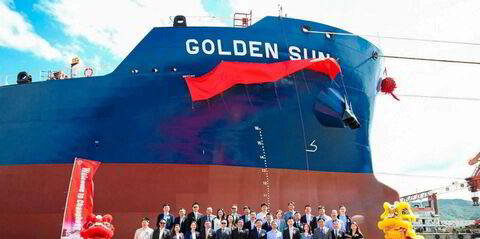Aspirations of the IMO to eventually phase out CO2 emissions across the shipping industry — including at least a 50% cut in greenhouse gas emissions by 2050 — will accelerate a lot of trends in ship technology seen during the past 10 years, says Lloyd’s Register marine and offshore director Nick Brown.
The list of alternatives to burning just fossil fuels is growing rapidly, including the use of solar in hybrid power management systems.
Brown says that, at Posidonia in June, the focus was very much on the more immediate issue of tackling the 2020 sulphur cap, notably new fuels and scrubbers — although scrubbers are viewed as a more transitional solution rather than a long-term one.
But Lloyd’s Register’s Zero Emission Vessels 2030 report suggests that a “significant proportion of the world’s fleet needs to be zero-emission vessels” if the industry is to achieve a greenhouse gas reduction of 50% by 2050.
“That probably means a mixture of sustainable biofuels, which I think would be a radically difficult technical challenge,” Brown says.
The problem is the availability of land for generating biofuels.
Ammonia, if it can be generated in the right quantities, could contribute towards zero-emission vessels. But safety issues would need to be examined involving its density, potential leaks in a confined space and ventilation.
Brown points to the growing number of government-sponsored or subsidised projects, some backed by the European Union, helping different technologies gain practical demonstrator status. Classification societies, flag states, engine manufacturers and operators can all benefit.
Among them is the EU-funded hydrogen methanol ship propulsion project, a collaboration between German shipbuilder Meyer Werft, Exmar of Belgium, Lloyd's Register, universities and various technology providers such as SSPA of Sweden.
It is examining onboard safety during bunkering operations and gap analysis between existing and required rules, as well as hazard identification and mitigation. Much more than just aspirations, Brown says things are moving forward.
Fuel alternatives
As with ammonia, LPG is now being considered as a fuel rather than being just a cargo.
Exmar has ordered two VLGCs at Hanjin Heavy Industries & Construction in the Philippines that are capable of using LPG as a fuel. Likewise, Dorian LPG is also retrofitting 10 of its VLGCs.
MAN Energy Solutions — the renamed MAN Diesel & Turbo — was due to unveil its new LPG engine prior to the SMM exhibition in Hamburg.
“So, there is a growing portfolio of solutions that, when you add them together, could contribute towards that [IMO] 50% reduction target,” Brown says. "But I believe it is too early to say there is a natural winner.”
Eventually, he says there needs to be a natural replacement for residual fuel.
Brown adds that it appears 95% of the world’s fleet will be using distillates or blended fuels but that clearly is not going to achieve the target. However, in recent weeks, a rush of ship operators — including Vale, Star Bulk Carriers and Wallenius Wilhelmsen Logistics — declared they are installing scrubbers so they can continue burning residual fuels.
DNV GL and Lloyd's Register have cooperated with the IMO to finalise the International Code of Safety for Ships using Gases or other Low-Flashpoint Fuels.
Brown says he is encouraged that by using risk-based methodology, they were able to support the early LNG adopters without waiting for the regulation to be in place. Similar to the way the International Association of Classification Societies is collaborating on cyber risk, learning was then embedded into the prescriptive rules when they were finalised.
Evidence that charterers and shipowners are driving change came with the requirement by Equinor for Exmar’s VLGCs at Hanjin to be LPG-fuelled.
Likewise, Brown sees LNG being specified for large containerships by the liner companies taking them on long-term charters. Ultimately, the choice of fuel will be a combination of a decision between owners and charterers.
LNG has been debated for more than 10 years, with one of Lloyd's Register's first and largest projects being the 57,565-gt, LNG-fuelled ropax Viking Grace (built 2013), which is the first passengership of its size to run on sulphur-free LNG and also has a rotor sail installed.
“I often refer to that as a good example because we don’t need regulation to justify a particular sector of the industry wanting to use an alternative fuel,” Brown says.
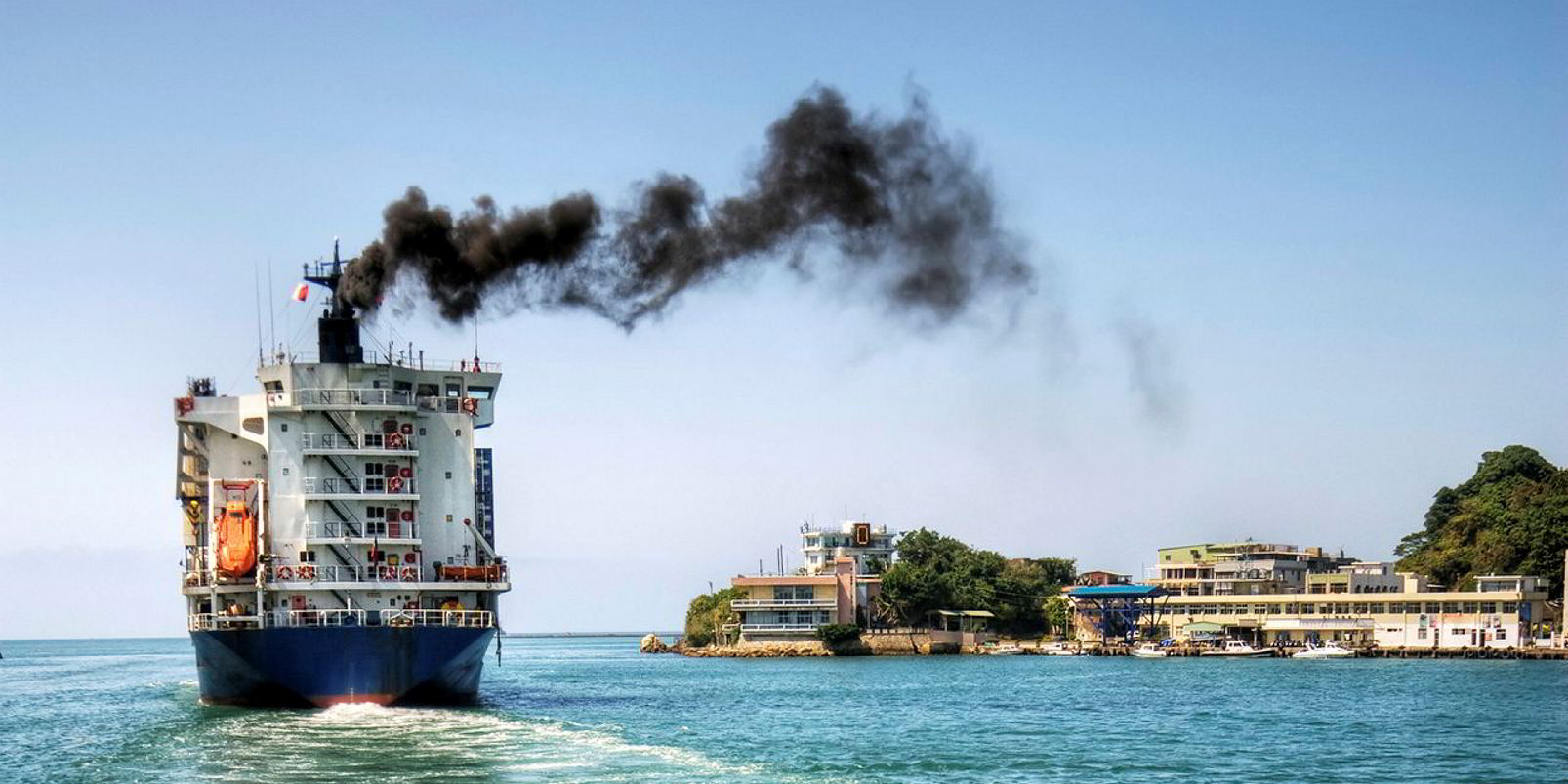
“LNG is not a zero-carbon fuel because it is still a hydrocarbon. But, it has these significant NOx, SOx and CO2 benefits over residual fuel and distillates,” he adds, citing applications including the 3,800-ceu vehicle carriers ordered by United European Car Carriers in China for trading in Europe, cement carriers and even a supramax bulker delivered earlier this year.
LNG makes sense for the supramax bulker as it trades around the South Korean peninsula and has a regular supply of fuel.
“But, more and more, we are seeing owners of deepsea ships seriously considering LNG,” Brown says, citing orders involving ultra large containerships and even a few aframax tankers.
LNG will be “part of the solution for the 2050 challenge”, with cruiseships already heading in that direction.
“I think it will transition from something that just suits niche ships into something much more credible, possibly for other deepsea shipping,” Brown says.
Flettner focus
He also points to the increasing number of shipowners “seriously” looking at Flettner rotors as retrofits — including operators of bulkers, tankers and ropaxes — because they “generate significant energy savings”.
Lloyd's Register has been busy working with air lubrication companies, because Brown says it is one of the few technologies where you can compare the direct impact on fuel consumption.
“All of these will be options operators of existing vessels can consider depending on regulation and potential trading emission schemes, or whatever may come from the IMO’s DCS [Data Collection System] or the MRV [monitoring, reporting and verification regulation] to reduce fuel consumption on existing vessels,” he says.
Lloyd’s Register has been working for years with Stena Line on the use of methanol for existing vessels, including the 10,670-gt ropax Stena Germanica (built 2001), which has run totally on methanol since 2016 following the conversion of its four main engines.
On digitalisation and automation, Lloyd's Register launched its first autonomous level class notation in 2016, which Brown says has attracted extensive interest. It began with six levels of autonomy (later reduced to five), reflecting some already existing features such as dynamic positioning systems.
On the subject of automation, Brown says the industry should not fear its adoption “if it leads to improved safety and environmental protection”.
Meanwhile, Lloyd's Register is involved in a condition-based monitoring programme with Tufton Oceanic that is aimed at delivering savings through digital innovation. Brown says proven capability, when applied in the offshore industry, was savings of up to 30% in maintenance costs.
It challenges fixed maintenance periods for a piece of equipment and, depending on the operating profile and appetite to accept unplanned downtime, adjustments can be made to the maintenance regime.
